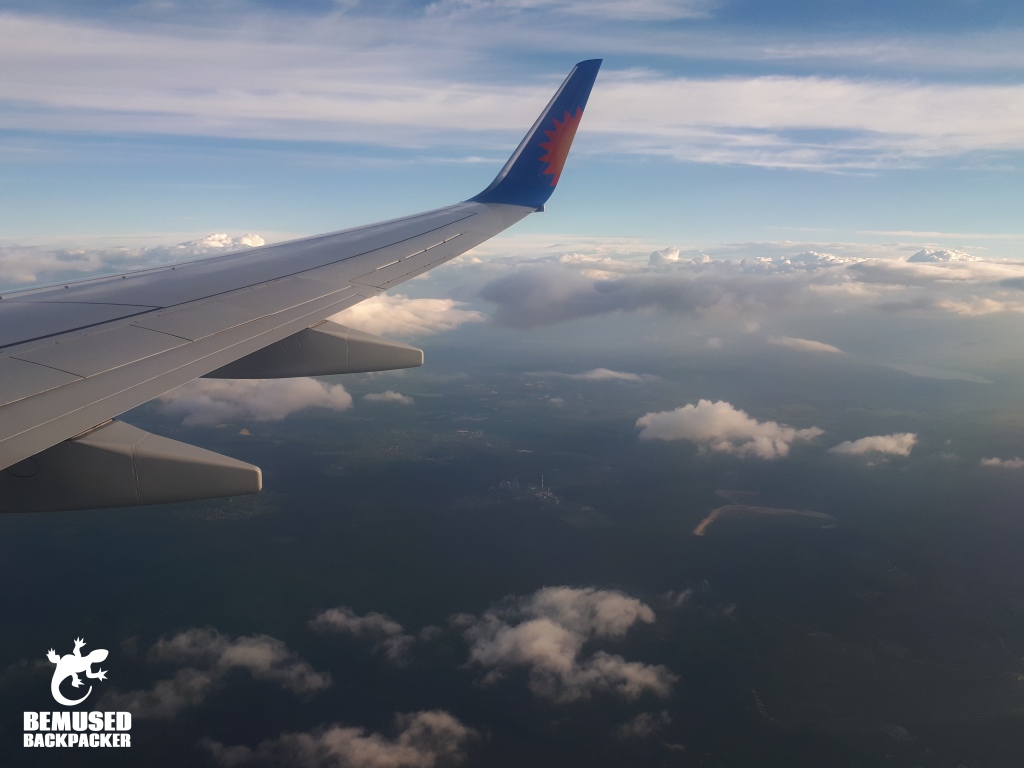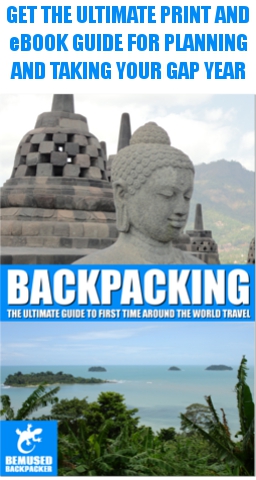
Myanmar has changed drastically in the last ten years. Barely a decade ago it was still a largely inaccessible country that made even crossing the border seem like a true adventure.
It still feels like that today but is now opening up to travellers like never before thanks to the lifting of a long held tourism boycott, and Western hotels, traveller amenities and even ATMs are starting to spring up everywhere almost overnight.
Due to decades of isolation, Myanmar still feels unspoiled and raw, but things are moving extremely fast in this newly opened country and tourism is threatening to go the same way as the mass package overtouristy industry of Thailand and other surrounding nations, a fact which will be a huge sham and an even bigger missed opportunity for a dedicated programme of responsible tourism.
This surge in western tourism infrastructure still hasn’t hit the local population all that much however, and you can still very clearly see local culture in all its strange and alien vibrancy.
Now is the time to visit Burma, before the pace of change has a lasting effect.
Culture And Etiquette.
Myanmar is a little paradoxical. In many ways it is largely untouched by Western culture and you will still see very traditional local dress and customs being practiced, but at the same time there are still remnants of British colonialism here with tea drinking almost a national pastime as much as it is in England and tea houses littered everywhere. Unfortunately these will probably be replaced with Starbucks in another decade, so enjoy them now.
Like many countries in South East Asia, Myanmar is very traditional and conservative, perhaps even more so due to the relative recency of Western tourism.
Travellers won’t be expected to wear the traditional dress such as longyi that many locals still wear (although Western dress is becoming more popular too), but they should ensure all clothing is respectful and non revealing, and that goes for both men and women. You may not get anyone saying anything, but you will probably offend locals if you walk around in short shorts and a vest top! This is especially true if you are visiting any religious or cultural site, and it is probably a good idea to carry around a long shawl or a shemagh too to cover up any exposed areas when needed.
There are pockets of Christian and Muslim faith in Myanmar but the vast majority of people here are Buddhist with strong animist traditions, and travellers should respect those practices. Avoid touching another person’s head, as it is considered the most sacred part of the body, and you should never point the bottom of your feet at anyone – especially a statue of a Buddha – as feet are unclean. Shoes should also be removed before entering any religious site or home.
What You Need To Know.
Visas.
All foreign nationals require a visa in order to visit Myanmar, but perhaps in an effort to attract tourists authorities are relatively easy going with entry formalities. You can obtain a visa from any consulate before you travel, or even better you can obtain an E Visa by applying online at the official Ministry of Labour, Immigration and Population website.
These E-visas can be used at Yangon, Mandalay and Nay Pyi Taw international airports; and at three Thailand–Myanmar land border crossings: Tachileik, Myawaddy and Kawthoung.
You should obtain a visa from a Myanmar embassy or consulate before you travel to the country, as you will not be able to get one at the border. Tourist visas last for 28 days from the date of entry, which must be within three months of issue, and cost around $50 at the time of writing.
It is important to note that visa information – and prices for obtaining a visa – for Myanmar can change without notice so you should always double check with the consulate before you go.
Health.
The following list of vaccinations are recommended for visits to Myanmar by the Centre of Disease Control and the NHS Fit For Travel website.
All travellers are strongly recommended to be up to date on their routine vaccinations including MMR, diptheria – pertusis – tetanus and varicella (chicken pox).
Hepatitis A and Typhoid are also strongly recommended.
Hepatitis B, Japanese encephalitis, Rabies and yellow fever are recommended for at risk groups. Discuss this with your physician, specialist nurse or travel clinic to see which vaccinations are suitable for you.
Proof of a Yellow Fever Vaccination will be required if you are travelling from a country where the disease is present.
Malaria risk is variable throughout the whole country. There is low to no risk in the major cities of Yangon and Mandalay, most of the rest of the country is low risk with further advice, whilst there are spots of high risk areas in the extreme southern stretch past Dawai, in between the Thai border and the Andaman sea, the area around Loikaw on the Thai border and the North and Western areas past Mandalay on the border of India, Bangladesh and China.
Antimalarials are advised dependent on where you will go in Myanmar, how long you will spend there and what you will be doing (if you are in an at risk group or not). You will need to talk through your plans with a qualified professional.
Anti mosquito measures are advised at all times due to other mosquito borne diseases such as dengue.
It is important to remember that health care provision across Myanmar is not robust and if you know you will need treatment in advance you may want to consider getting it in Thailand or China instead. Pharmacies and clinics are available in Mandalay and Yangon for minor injuries or ailments, and health insurance is obviously strongly advised.
Read more:
Do You Really Need Anti Malarial Medication On Your Gap Year?
The Ultimate Guide To Travel Vaccinations.
Crime and Safety.
Myanmar has extremely strict punishments for criminality and as a result crime rates are very low. Saying that there are occasional reports from travellers of opportunistic theft just like anywhere, so a little common sense and awareness should keep you and your belongings safe.
The Foreign Commonwealth Office advise against all but essential travel to Rakhine State (except for the tourist resort of Ngapali and travel to/from the resort via Thandwe airport), the North Eastern Kachin State bordering China (except the towns of Myitkyina, Bhamo and Putao) and Kokang Self Administered Zone in northern Shan State, all due to continued risk of armed conflict.
The truth of the matter is – as scary as it sounds – most travellers can easily avoid these and other border areas, and any areas that are open to tourists are generally quite safe. The government have a vested interest in keeping tourists and travellers safe, and will not allow you into conflict zones. Use your common sense, stick to the majority of the country inland – where there is no government warning – and you will stay out of harms way.
Read more:
Should You Travel To Dangerous Countries?
The Reality Of Fear And The Truth About Travel Safety.
Travel Safety Advice. The Good, The Bad And The Downright Crazy.
Costs and money.
The currency of Myanmar is the kyat (pronounced “chat”), usually abbreviated as K, Ks or MMK.
You cannot buy or sell the kyat outside of Myanmar, so you will have to exchange it when you are there. There is still an old perception in travellers that you have to take huge amounts of cash into the country with you, left over from the days when Myanmar was still largely closed off and there was zero infrastructure, this simply isn’t true anymore. ATMs are popping up everywhere now (although they only give out kyat at the moment), and large banks and even hotels are often the best places to exchange currency. Saying that, it is still smart to take enough cash to cover your essentials. USD is often widely accepted, and in fact only accepted at some larger tourist hotels, long distance transport such as trains and entry fees for attractions, so it is best to have a lot of USD with you, and exchange some into kyat to pay for local services. Just make sure you use up all your local currency before you leave.
Myanmar is still an expensive country for travellers, due largely to the fact that travel infrastructure is still quite new and is often in high demand. Even budgeting really well will set you back around £30 GBP a day, more mid range options with private rooms can be between £30 to £75 a day, and the sky is the limit for top end luxury travel. You can stick to a fair budget however if you eat at local street stalls and take local buses.
When to go.
Myanmar is a tropical climate so like much of south east Asia it is hot, and wet! From March to May, the country becomes very hot, particularly in the the central plains and the cities of Mandalay and Bagan, but can be a good time to travel if you don’t mind the heat and are sensible with protection and hydration. The wet season generally starts with the onset of the southwest monsoon from May to October. Temperatures cool a little and the rains lessen between November to February, and this is often seen as the best time to go.
Places To See.
Yangon.
Once Burma’s capital city, Yangon is still one of the cultural hearts of Myanmar thanks to the truly awe inspiring Shwedagon Paya and the wealth of colonial era architecture. Yangon is also one of the options you have for flying into Myanmar, and thanks to it’s relatively high level of traveller infrastructure, odds are you will be passing through here at some point. Just don’t make the mistake of using it as a transit point and take the time to explore deeper.
Schwedagon Paya.
This is one of Buddhism’s most sacred sites in Myanmar and is a significant monument in Yangon. It is worth coming here simply to marvel at the gold leaf and jewel encrusted stupas, they really are an awesome sight especially at sunrise or sunset. Visit early in the morning when the crowds are sparse if you want a more reflective time.
Mandalay.
Despite the exotically familiar name, modern Mandalay is crowded, dirty and used primarily by travellers as a transit station to get into and out of Myanmar. But take a few days to get your bearings and explore a little deeper and you will discover what made this exotic city so famous. Tiny backstreets full of stupas, temples, churches and monasteries, craft shops and local art performances all make for a fascinating day or two of exploration. The moat and fortress walls of the former Mandalay citadel are worth viewing, and the Mandalay Palace has been completely reconstructed from the original. And all of that is before you delve into the dozens of Buddha statues and relics, gold and jade markets and countless other cultural gems that make Mandalay special.
Bagan.
This temple town is one of Myanmars biggest attractions, and rightly so. Part way between Mandalay and Yangon and with the Ayeyarwady River winding its way past, this vast temple complex will amaze even the most temple fatigued of travellers as literally thousands of temples, stupas and ruins wind their way up from the vast plains. Take a balloon tour for the best views.
Inle Lake.
This vast lake is a world all unto itself and is much, much more than ‘just’ a lake. Arrive here and you will come across Buddhist temples on tiny islands, houses and mini villages on stilts (some of which have accomodation options), floating gardens and a constant stream of motorboats and unique peddle powered skiffs.
Things To Do.
Go food shopping at Heidan Market.
This market in Yangon is a quintessentially ‘off the beaten track’ destination and is an amazing place to get a feel of local culture and grab some great food while you are at it. It is easy to get to on the circle line train route but is so far off the tourist trail it is truly like stepping away from it all.
Take a ferry trip down the Ayeyarwady River.
There is no better way to see this famous river (or feel like you are on a mini cruise) by joining locals on these multi day ferry trips.




